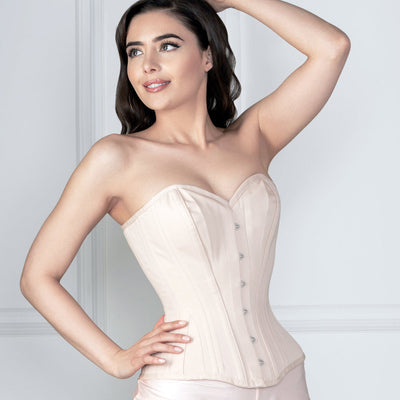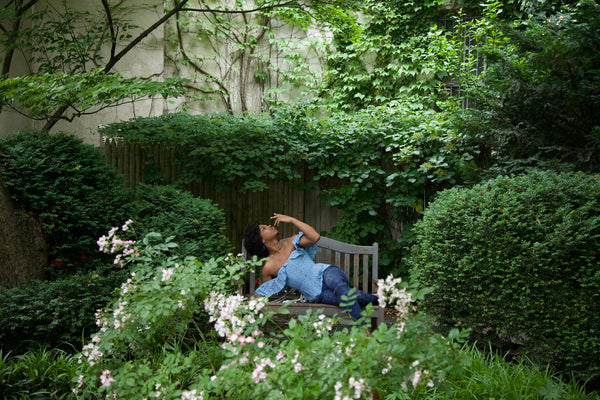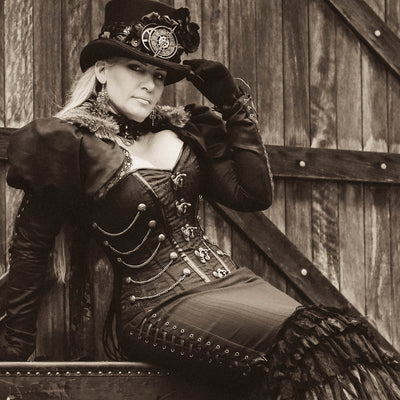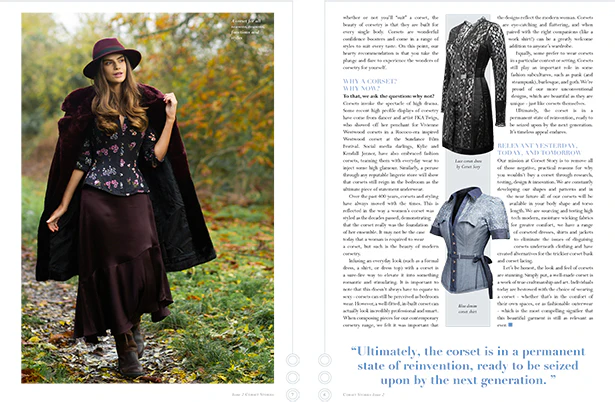CORSETS FOR BUST SUPPORT: A NECESSARY RETURN?
Some Women Need a Lot of Support
What do corsets do? I mean, they look nice, sure, but what else?
To use the immortal words of every large-busted woman from the dawn of time- “My back hurts.” In the past hundred years or so, the trend has been more toward the wearing of brassieres, or bras, instead of garments that travel the entire trunk.
Hunting for the right bra fit has haunted many, and even when it is found, the darn thing still pulls the shoulders forward. But we persist because it is what we know.
We are not, however, the first people to ever try to find a way to support our bodies. The people of the past had bodices, corsets, stays, girdles, and any other number of items intended to support the upper body. The struggle to find adequate bust support has also long overlapped the quests for good posture, good looks, and good health.
These more comprehensive kinds of garments had persisted for nearly a thousand years before the brassiere came into fashion, and there appear to be some solid reasons why. We know that it is best to stand up straight for reasons of health and beauty. Humans are, however, unfortunate in that our spines are not perfectly designed for being bipedal. The upright nature of our species is abnormal in the animal kingdom, and some parts of our bodies are simply not up to the task of living pain-free unless cared for very protectively. Given that not everyone has the time, inclination, or health prospects to undertake the serious task of caring for the temple that is the body, sometimes we need a little help.
The Quest Begins
So how, then, do we find the center of this seemingly unnavigable maze? It would appear that, at least in the modern age, the quest begins with science. The data from research conducted by Ling et al. entitled “Women’s Load Carriage Performance Using Modular Lightweight Load-Carrying Equipment,” a study conducted to understand the load carrying abilities of women in military settings, suggests that load carrying equipment designed for men may not be optimal for women.
In addition, the data suggested that both men and women performed better when weight from heavy loads was shifted from the shoulders to being carried by the hips by utilizing a tightly cinched waist belt attached to the load carrier. Most of these conclusions were corroborated by a study on children carrying heavy backpacks. The study on children indicated that carrying heavy loads with the shoulders was very bad for the children, causing lower back pain among other problems.
Carrying loads with the hips appears to lessen shoulder and back pain, while supporting good posture and creating fewer injuries.
This logic could be applied to a lesser extent to garments intended to support the heavy load of a large bust, which sadly, cannot be put down for a moment.
The anchor point of weight on most brassieres is in the middle of the back. It is likely not intentional, but according to the load carriage study, this is the place where men prefer to anchor weight for the sake of comfort when carrying loads. This is NOT the same place women prefer to anchor weight, which is closer to the hips. Either way, holding weight using the upper back and shoulders is less optimal for health.
The corset creates a distribution of weight which is not like that of the brassiere. Corsets shift the pressure from the upper back and shoulders and distribute the weight throughout the waist and across the hips. Corsets and similar garments also create increased intra-abdominal pressure, which is the tension that can result from muscle tension putting pressure on the areas that hold up the spine properly and reduces stress on the vertebrae, as well as in some cases guiding the trunk muscles to activate properly. Some of these effects are like that of weight-lifting belts intended to reduce back pain and injury while lifting.
A Supporting Role in History
Historically, women and men both wore corsets. Corsets were used for support during strenuous activities like hunting and riding, and even today support belts are used during extreme weight-lifting.
The existence of the bestselling corset of all time, the Pretty Housemaid Corset by Symington, was marketed to women who worked. This indicates that not only did working class women of the 1800’s wear corsets, but that they were extremely popular.
The Pretty Housemaid Corset was an affordable, mass-manufactured corset made with extra front cording, that would have been supportive during the long work hours and forward bending movements of working women of the time. Though there are not many surviving first person accounts from women of that time and social class, we can gather that they did have some economic power, and that they used it to “vote” in a sense, for a product that was functional and beautiful. Despite depictions of lower-class women as being unfeminine and badly dressed, their actions suggest that they did not agree.

Medical Attempt to Provide Support
Recently, some denizens of modern medicine have endeavored to solve the problems presented by heavy breasts. Some, frighteningly, claim that surgery is the answer to problems caused by bras. Ergün et al. insists that “It has been shown in several publications that reduction mammaplasty is the most effective treatment modality for relieving the majority of the symptoms associated with hypertrophied breasts13.” So, keep wearing bras and just get surgery? Next.
Other solutions involve rigid structures that their inventors claim reduces the problem of over-large breasts and creates a supportive base for them. The company Optifit has created an “alternative breast support garment” that distributes weight away from the shoulders and down the body, “lengthening the abdominals,” and also by not pulling the shoulders forward. These kinds of contraptions tend to look like dystopian restraint harnesses, as their inventors claim that they distribute the weight of heavy breasts across the torso. As it happens, there is a device that already does this without the harsh vibes.
The DJO Institute, a purveyor of medical products and citing numerous medical studies, claims that their "DonJoy Osteostrap", can assist with supporting the bodies of women with osteoporosis and other “debilitating back conditions.” They claim that the product provides pain relief and stabilization for the torso and spine. As one can clearly see, their device is not entirely dissimilar to the design of an under-bust corset.

Medical Corsets
Devices that are much closer to regular corsets have been used for various orthopedic purposes. Corsets are sometimes used to correct spinal problems like scoliosis and have anecdotally been discussed to have a positive effect on the symptoms of Ehlers Danlos Syndrome.
It was noted in a seamstress manual from 1838 that a particularly frail woman would require more boning in her stays or corset to better support her body. This indicates that these garments had use as, at the time, a visually innocuous means of lessening the symptoms of owning a delicate body.
Anecdotal experiences suggest that office workers could benefit greatly from a posture support object such as a corset. With sitting in an unnatural position all day comes slouching, back pain, and overstretched ligaments that can cause pain and general unhealthiness. Utilizing a support device while at one’s desk can counteract the forward pressure created from sitting.
A Sporting Supporter
The solution does not involve surgery or reinventing the wheel. It’s already been made. There are many applications of corsets and similar garments for ordinary people who simply want to reduce their back pain; they are not just for cosplayers or historical dress enthusiasts.
Ultimately, it seems we need to reconsider one of the things modern societies have taken off- namely, corsets, which can provide a little extra support for those who seek it. With a rising trend in reclaiming the corset, the words “My back feels great” could come from anyone at any time. Watch out.
If you would like any help on sizing, styling or have any general questions, please do not hesitate to contact our team by emailing us at sales@corset-story.com or clicking the 'Contact Us' button below.






